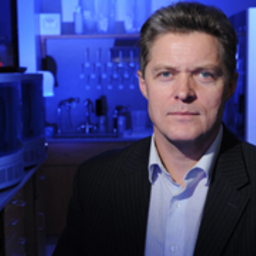Search the Newsroom
Filter By
Showing 2901 - 2910 of 3007 results
Technically Speaking: Protecting Your Investment in Vaccines So They Can Protect Your Patients
Find information on how you can ensure that your sizeable vaccine investment is appropriately protected from potential loss (and subsequent replacement costs) and that your patients receive viable vaccines.
Pink Eye Goes Awry
Read a case study from the Division of Ophthalmology about pink eye, the detection of herpes simplex virus-1 (HSV-1) and the recurrence of HSV keratitis in children.
Roger Daltrey and Joan Jett & the Blackhearts Support CHOP
Music icons join together in a concert to support teens with cancer at CHOP through Teen Cancer America.
Recognizing a Wheat Allergy
Learn more about wheat allergy symptoms. When it comes to wheat and gluten – the protein found in wheat – there are many ways the body can react.
Premie Eye Disease Can Be Successfully Screened by Telemedicine
CHOP expert leads study aimed at improving outcomes in underserved children by using telemedicine.
Roger Daltrey and Joan Jett in Concert for a Great Cause
Rock singers Roger Daltrey and Joan Jett will present an evening of music and philanthropy at Verizon Hall at the Kimmel Center in Philadelphia on July 28, 2014.
Recognizing Gluten Intolerance
If your child shows sensitivity to foods with gluten, but does not have celiac disease, it's possible that she may have a non-celiac gluten sensitivity, also known as gluten intolerance.

18th Fetal Surgery Reunion Gathers Families Across the U.S.
A special reunion brought together 1,500 people from 22 states; nearly all of the children in attendance were prenatally diagnosed with a birth defect.
Recognizing Celiac Disease
Celiac disease is one of the most common genetic conditions in the world, affecting 1 in every 133 people. People with celiac are not able to digest gluten, a protein found in wheat, rye and barley.

3 Gene Networks Found in Autism, May Offer Treatment Targets
A new CHOP study has uncovered several gene networks with potentially important roles in autism. These networks may offer attractive targets for developing new autism treatments.